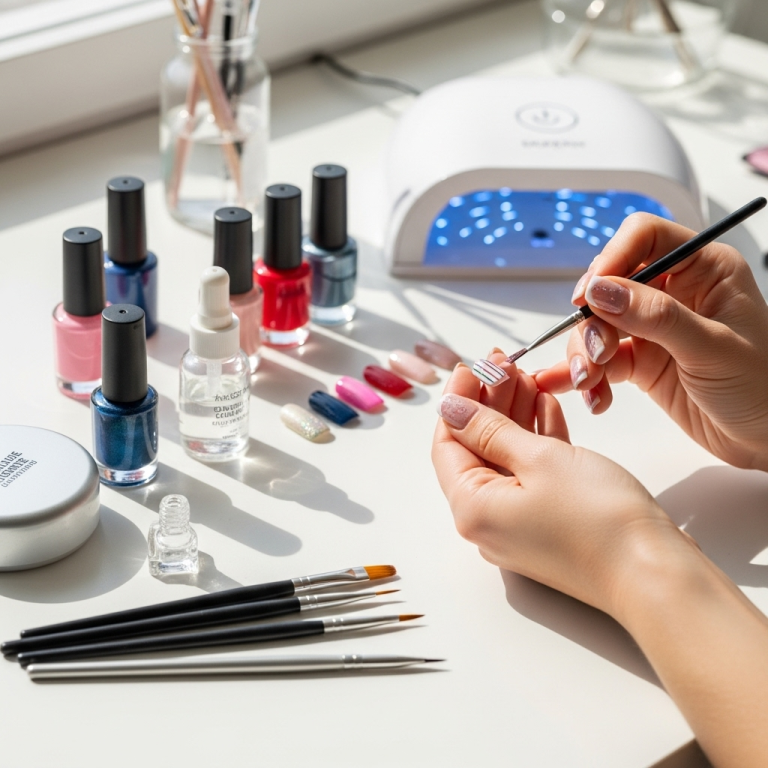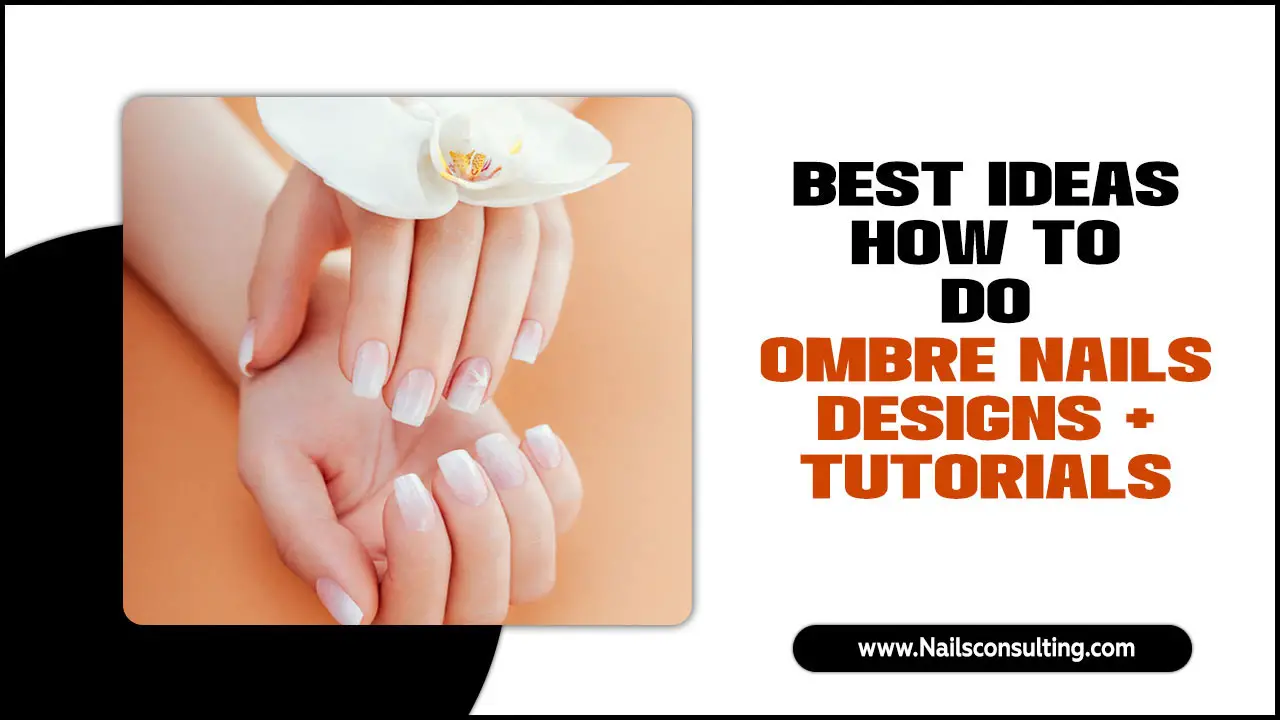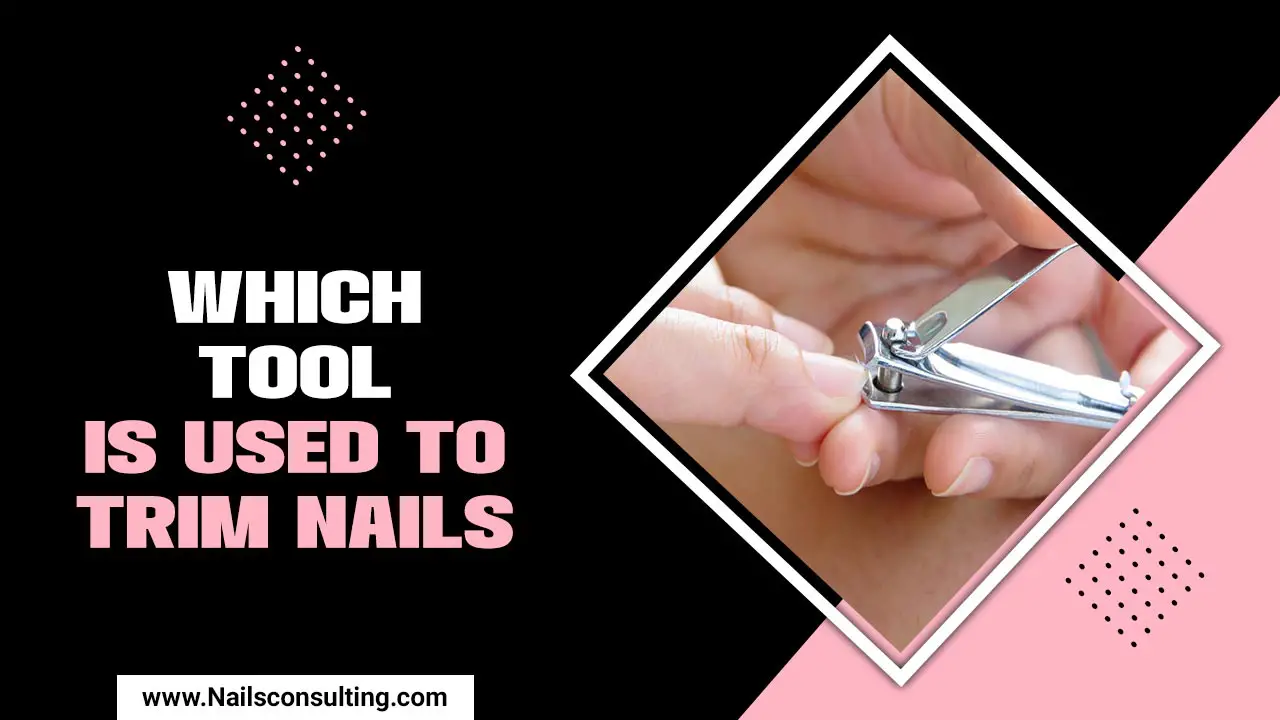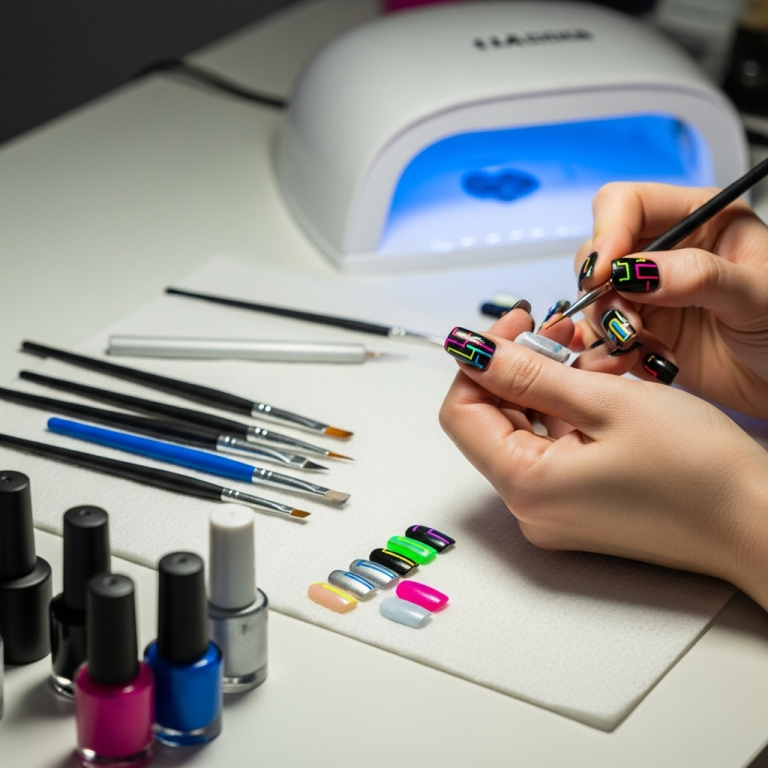Quick Summary:
Safely remove gel nails at home with these genius tips! We’ll guide you through a gentle, effective soak-off process, protecting your natural nails and ensuring a smooth transition to your next manicure. Say goodbye to painful peeling and hello to healthy nails.
Gel manicures are fabulous! They give you that long-lasting, chip-free shine that traditional polish just can’t match. But when it’s time for a change, the thought of removal can be a little daunting, right? We’ve all heard the horror stories of weak, damaged nails after a gel removal gone wrong. But don’t worry! Taking off your gel polish safely at home is totally achievable, and it doesn’t have to be a struggle.
At Nailerguy, we believe in making nail care fun and accessible for everyone. That’s why we’ve put together this super-simple, step-by-step guide. We’re going to walk you through exactly how to dissolve that gel polish gently, preserving your natural nail’s health and strength. Ready to reveal beautiful, bare nails and prep for your next amazing mani? Let’s dive in!
Why Safe Gel Nail Removal Matters
Gel polish is designed to be durable, which means breaking that strong bond between the gel and your natural nail requires a specific, careful approach. Ripping or peeling off gel is a big no-no because it takes layers of your natural nail with it. This can lead to:
Thinning of the natural nail: Making them weaker and more prone to breaking or splitting.
Ridges and uneven texture: Creating a rough surface that’s hard to polish smoothly.
Dryness and brittleness: Leaving your nails feeling rough and uncomfortable.
Potential for infection: If the nail bed is damaged.
Using the right removal method, like the soak-off technique, ensures that the gel is dissolved and lifted away gently, leaving your natural nails as healthy as possible.
Gather Your Gel Nail Removal Supplies
Before we start, let’s make sure you have everything you need for a smooth and safe removal process. Having all your tools ready makes the experience much easier and quicker.
Here’s a list of what you’ll need:
100% Acetone Nail Polish Remover (This is key! Non-acetone removers won’t dissolve gel polish effectively.)
Cotton balls or pads
Aluminum foil
Cuticle pusher or orange wood stick (Make sure it’s clean!)
Nail file (A fine-grit file, around 180-240 grit, is best to avoid damaging your natural nail)
Cuticle oil
Hand lotion
Optional: A buffer for smoothing
The Genius Step-by-Step Gel Nail Removal Process
Ready for the magic? Follow these steps, and you’ll have off your gel polish without any damage.
Step 1: Prep Your Nails & Tools
First things first, let’s get organized. Take your nail file and gently buff the very top layer of your gel polish. You don’t need to file down to the natural nail; just break the seal or shine of the gel. This will help the acetone penetrate the polish more effectively. Think of it as creating tiny little doors for the remover to get in!
Step 2: Prepare the Soak-Off Wraps
Next, we’re making our magic removal wraps! Tear off about 10 pieces of aluminum foil, each roughly 4×4 inches. Then, take your cotton balls and gently pull them apart so they’re thin enough to cover your nail bed but not too bulky. Each cotton ball should be large enough to fully saturate and wrap around your fingertip.
Step 3: Saturate the Cotton with Acetone
This is where the dissolving power comes in! Carefully pour some 100% acetone nail polish remover into a small, clean container. Dip one of your prepared cotton balls into the acetone, making sure it’s thoroughly soaked but not dripping excessively.
Step 4: Wrap It Up!
Place the acetone-soaked cotton ball directly onto one of your gel-polished nails, making sure it covers the entire surface of the polish. Then, take one of your aluminum foil pieces and wrap it snugly around your fingertip, securing the cotton ball in place. The foil helps to trap the heat from your finger, which speeds up the dissolving process. Repeat this for all ten nails.
Step 5: The Waiting Game (10-15 Minutes)
Now comes the patient part. Let your nails soak for about 10 to 15 minutes. During this time, the acetone will work its magic, breaking down the gel polish bonds. You can use this time to relax, listen to a podcast, or catch up on social media (just try not to smudge anything!).
Step 6: Gentle Removal of Softened Gel
After 10-15 minutes, gently unwrap one finger at a time. The gel polish should look softened or slightly lifted. Take your clean cuticle pusher or orange wood stick and gently nudge the softened gel off your nail. Start from the cuticle area and push towards the free edge. You should be able to slide it off easily.
Tip: If the gel isn’t coming off easily, don’t force it! Re-wrap the finger with a fresh, acetone-soaked cotton ball and foil and soak for another 5 minutes. Forcing it can damage your natural nail.
Step 7: Clean Up & Buff
Once all the gel polish is off, you might notice some stubborn bits or a slightly cloudy residue. Use your fine-grit nail file or a clean buffer block to gently buff away any remaining residue and smooth out the nail surface. Be very gentle here – we’re just cleaning up, not removing layers of your natural nail.
Step 8: Hydrate and Nourish!
This is a crucial step for nail health! After removing all the gel, your nails and cuticles might be feeling a little dry from the acetone. Generously apply cuticle oil all over your nails and cuticles. Massage it in well. Follow up with a good hand lotion to rehydrate your skin. This replenishes moisture and keeps your nails looking and feeling healthy, ready for their next adventure!
Alternative Methods: Quick Removal Patches & Strips
If the foil wrap method seems a bit fiddly, there are some convenient ready-made options! Many beauty brands offer pre-cut gel removal patches or wraps. These usually consist of a small acetone-soaked pad enclosed within a sticky, self-adhesive strip or a foil-backed patch.
How they work:
1. You simply file the top layer of your gel polish as usual.
2. Peel off the backing and stick the patch onto your nail, ensuring the acetone pad covers the gel.
3. Wait for the recommended time (usually 10-20 minutes).
4. Remove the patch and gently remove any remaining softened gel with a cuticle pusher.
These can be a great time-saver and are often less messy than doing the DIY foil wraps. They are widely available at beauty supply stores and online retailers. Some find these to be a very beginner-friendly option.
What to Do After Removing Gel Nails
The journey doesn’t end with removal! To keep your nails in tip-top shape, consider these post-removal care tips:
Give your nails a break: If your nails feel a bit delicated after removal, give them a few days or even a week without any polish. This allows them to recover and strengthen naturally.
Deep conditioning: Continue using cuticle oil daily and hand lotion regularly. A nourishing nail treatment or strengthener can also be beneficial.
Gentle filing: If your nails need shaping, use a fine-grit file and always file in one direction to prevent splitting or peeling.
Avoid harsh chemicals: When doing chores, wear gloves to protect your hands and nails from drying detergents and chemicals.
Table: Pros and Cons of Gel Nail Removal Methods
Let’s break down the common ways to remove gel to help you choose the best method for you.
| Method | Pros | Cons | Best For |
|---|---|---|---|
| Acetone Soak-Off with Foil Wraps (DIY) | Effective and thorough dissolve of gel polish. Cost-effective as you likely have most supplies. Good control over the process. | Requires several steps and a bit of coordination. Acetone can be drying if not followed by moisturizing. | Beginners and experienced users looking for a reliable, budget-friendly method. |
| Pre-made Gel Removal Patches/Strips | Convenient and mess-free. All-in-one solution. Easy to use, especially for on-the-go. | Can be more expensive than DIY. Acetone concentration may vary by brand. | Travelers, busy individuals, or those seeking the simplest application. |
| Professional Salon Removal | Expert application and removal by trained technicians. Often includes post-removal treatments. Safe and efficient. | Most expensive option. Requires an appointment. | Those who prefer professional care or are unsure about DIY removal. |
| Soaking in a Bowl of Acetone | Can be quick if the polish is very soft. | High risk of over-drying natural nails and skin due to prolonged submersion. Less targeted application. May not be as effective for thicker gel formulas. | Generally not recommended due to potential for damage and drying. |
Common Questions About Gel Nail Removal
Here are some answers to questions you might have about taking off gel nails safely.
Q1: Is it bad to soak nails in acetone for too long?
A: Yes, prolonged soaking in pure acetone can dry out your natural nails and the surrounding skin significantly. This can lead to brittleness, making your nails more prone to breaking or peeling. It’s best to stick to the recommended soaking times of 10-15 minutes, and always re-wrap if the gel isn’t ready to come off.
Q2: What should I do if gel polish is still stuck after soaking?
A: Don’t force it! If the gel isn’t softening and lifting easily, re-soak it with fresh acetone for another 5-10 minutes. You can also very gently use your cuticle pusher or orange stick to gently* nudge the softened areas. Never scrape aggressively, as this can damage your natural nail.
Q3: Can I file off gel nails instead of soaking?
A: While it’s possible to file gel off, it’s highly discouraged, especially for beginners. It’s very easy to accidentally file into your natural nail, causing thinning, damage, and a rough surface. If you must file, only remove the very top shiny layer and then proceed to a soak-off. For safe removal, soaking is the preferred method.
Q4: How often can I get gel manicures?
A: Most people can safely get gel manicures intermittently. The key is proper application and removal. If your nails feel healthy and strong, you can get them done frequently. However, if you notice thinning or weakness, it’s a good idea to take a break between gel manicures to allow your natural nails to recover. Many choose to have a week or two break, focusing on nail care.
Q5: Do I need to use 100% acetone?
A: Yes, for gel nail removal, 100% acetone is essential. Other nail polish removers, even those labeled “acetone-free,” typically contain other solvents that are not strong enough to break down the cured gel polish effectively. You can find 100% acetone at most drugstores or beauty supply stores.
Q6: What is the best way to strengthen nails after gel removal?
A: Consistent hydration is key! Apply cuticle oil daily to keep your nails and cuticles moisturized. Using a good quality hand lotion after washing your hands also helps. Consider a nail strengthener or treatment serum designed to fortify natural nails, especially if they feel a bit weak. For more insights on nail health, the National Institutes of Health offers some general information on nail care and conditions here.
Conclusion
And there you have it! Removing gel nails safely at home is totally doable with a little patience and the right technique. By following these steps, you can enjoy beautiful gel manis without worrying about damaging your natural nails underneath. Remember, gentle removal and consistent care, especially hydration with cuticle oil and lotion, are your best friends for keeping your nails strong, healthy, and ready for whatever fabulous color or design you dream up next. Happy polishing, smart removal, and enjoy your beautiful nails!




